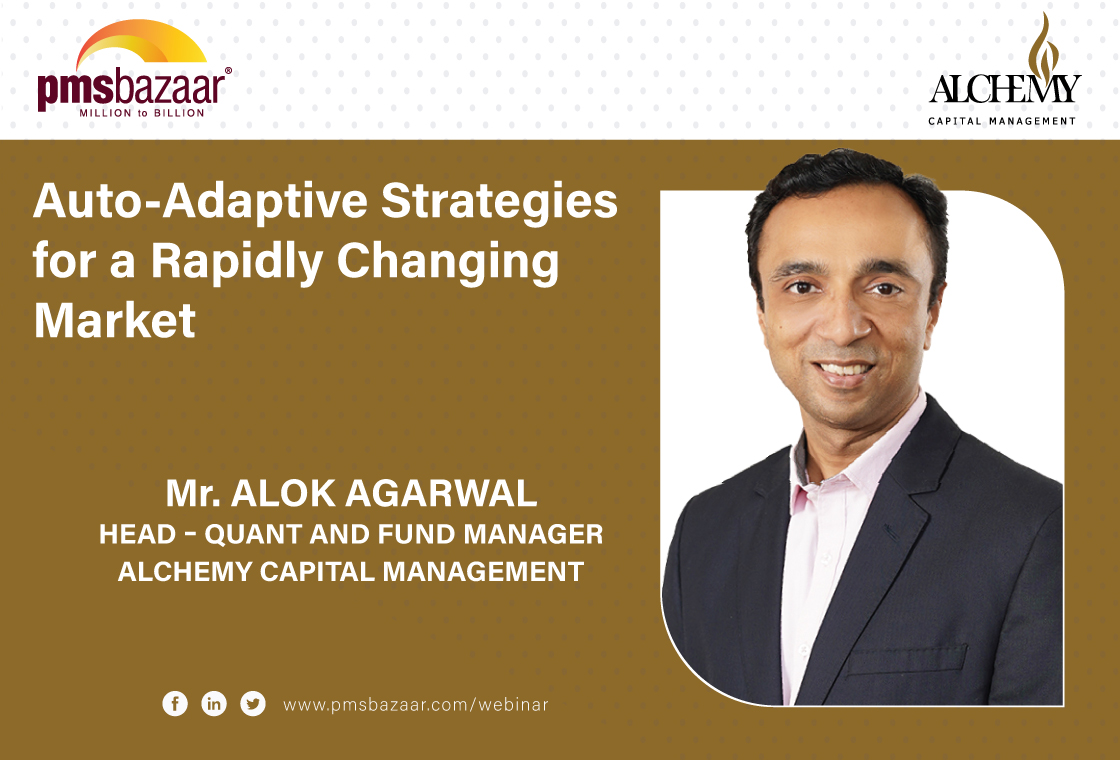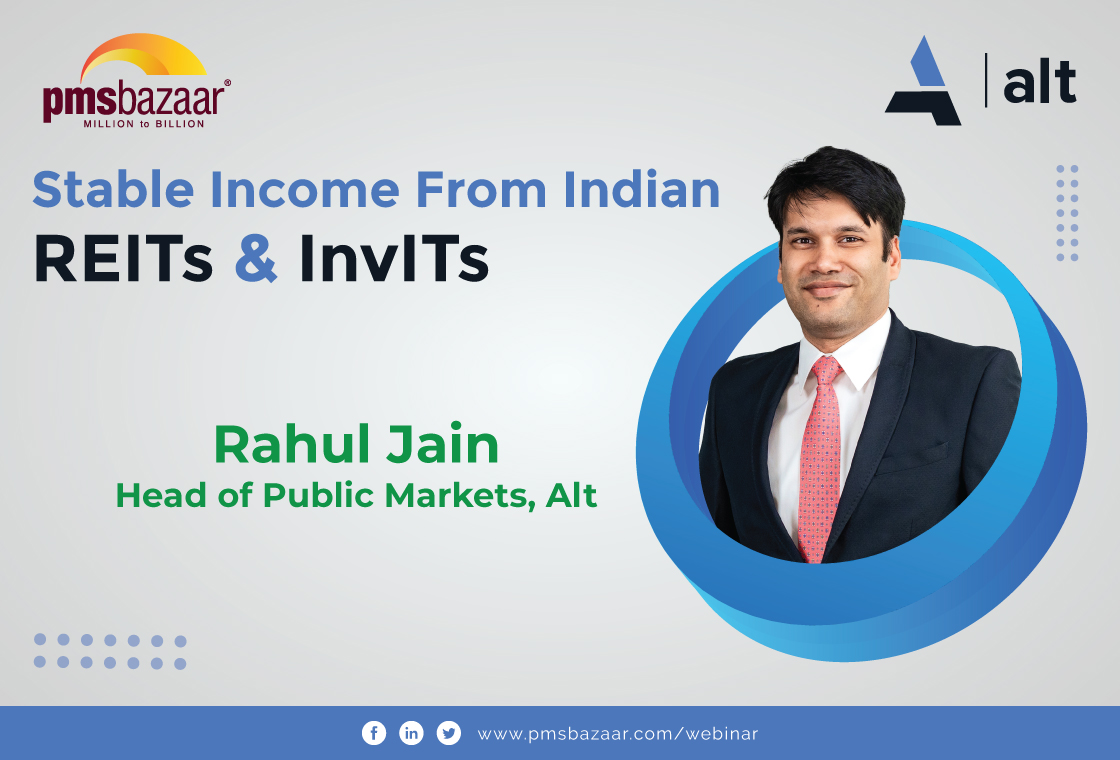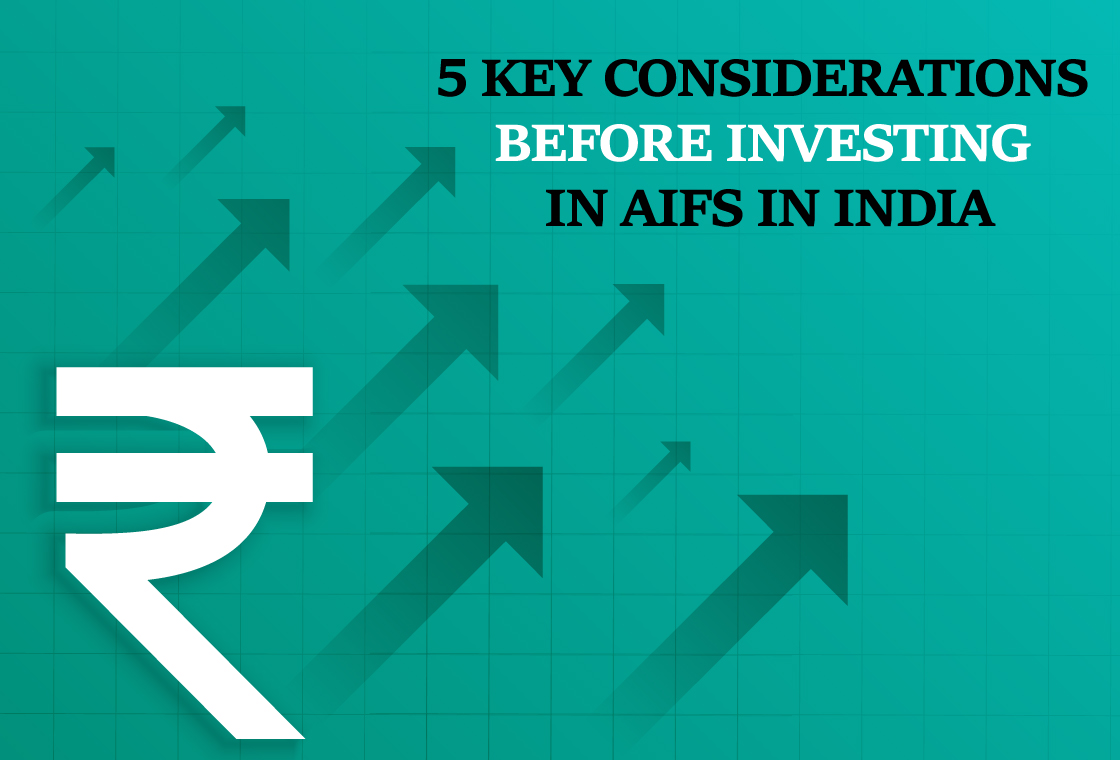PMS Bazaar recently organized a webinar titled “Auto-Adaptive Strategies for a Rapidly Changing Market,” which featured Mr. Alok Agarwal, Head - Quant and Fund Manager, Alchemy Capital Management.

The webinar blog covers insights from Mr. Agarwal, which includes, his approach to investing through adaptability. Using historical market cycles and the eQGP framework—Environment, Quality, Growth, and Price Action—he demonstrates how systematic, rule-based strategies help investors adjust to changing market conditions. By dynamically weighting sectors and stocks, the strategy mitigates emotional biases, ensures disciplined portfolio management, and captures consistent alpha in evolving markets
Key aspects covered in this webinar blog are
- The only constant is change: an auto-adaptive strategy for today’s markets
- Adaptation: the masterstroke of long-term success
- Learning from historical market cycles
- The eQGP framework: an auto-adaptive solution
- The three lenses of company evaluation
- The 'E' factor: determining the pitch report
- Portfolio construction
- Current market signals
The Only Constant is Change: An Auto-Adaptive Strategy for Today’s Markets
Mr. Alok Agarwal initiated his session by introducing the day’s central theme: “An auto-adaptive strategy for rapidly changing markets.” He immediately addressed a common investor misconception. Nearly all investors, he noted, harbour a desire for a singular, perfect formula—a simple screening tool or a one-line rule—that guarantees the identification of winning stocks and ensures consistent outperformance. Mr. Agarwal stated plainly that such expectations are unrealistic. Successful investing, he emphasised, demands continuous engagement: investors must consistently evaluate market conditions and the prevailing economic and business cycles. Only those who master the art of adaptation can perform well and sustain success over the long term.
Adaptation: The Masterstroke of Long-Term Success
To illustrate the importance of adaptation, Mr. Agarwal drew examples from the sports world, particularly the career of cricketing legend Sachin Tendulkar. He highlighted that Tendulkar did not rely on a single technique across formats; his approach in a fast-paced T20 match differed from his strategy in a one-day international or a five-day Test match. Tendulkar’s long and illustrious career, Mr. Agarwal explained, exemplified the power of adaptability. Investors, he argued, must cultivate a similar flexible mindset, adjusting strategies to suit prevailing market conditions rather than adhering rigidly to fixed rules.
He then presented a historical analysis of market sector shifts to demonstrate how drastically conditions change over time. For simplicity, he grouped the market into four categories: Financials, Cyclicals (materials, industrials, energy, real estate), Consumers (discretionary and staples), and Other Defensives (IT and Healthcare). This categorisation allowed him to show how different sectors dominate at different times and why adaptability is essential.
Learning from Historical Market Cycles
Mr. Agarwal took the audience back to the end of 2003, when cyclicals dominated nearly 41% of the overall market, while Financials and Consumers each accounted for approximately 19-20%. The period from 2003 to 2007 witnessed a remarkable bull market, driven by Capex-led growth. The Sensex grew nearly sevenfold during this period, and cyclicals soared, eventually comprising 67% of the market. Meanwhile, Financials, Consumers, and Other Defensives lost relative weight, with Consumers and Defensives nearly halving their presence. He emphasised that being underweight on cyclicals and overweight elsewhere would have significantly hindered portfolio performance.
The subsequent cycle, spanning 2007 to 2019, saw a complete reversal. Financials surged from 15% to nearly 38%, while cyclicals—the stars of the previous cycle—halved to 31%. Consumers and Other Defensives outperformed, with Consumer stocks more than doubling their share. This cycle was almost the opposite of the previous one. Mr. Agarwal warned that failing to adapt across cycles could lead to prolonged periods of poor returns, sometimes spanning over a decade. These historical patterns reinforced the importance of constantly monitoring economic and market cycles to align investments effectively.
The eQGP Framework: An Auto-Adaptive Solution
To operationalise this principle, Mr. Agarwal introduced the firm’s proprietary eQGP framework, central to the Alchemy Smart Alpha 250 strategy. The objective is to automatically adapt to market cycles while mitigating emotional biases through a systematic, rule-based approach, ultimately generating consistent alpha.
eQGP stands for Environment, Quality, Growth, and Price Action and evaluates companies within the top 250 by market capitalisation. Each company is scored on three core dimensions:
- Quality (Q): Measures business efficiency, including metrics like Return on Equity (ROE), consistency of profit and cash flow, and low leverage. It also incorporates a subjective evaluation of management quality, particularly the fairness of promoters to minority shareholders.
- Growth (G): Compares a company’s growth relative to its past performance, peers, and the overall market. Growth that appears strong in a slow market may be inadequate in a high-growth environment.
- Price Action (P): Reflects momentum, assessing a stock’s price strength relative to the overall market.
The differentiating factor, Mr. Agarwal explained, is the Environment (E) score, which assesses broader economic and market conditions. This score determines the relative weight assigned to Quality, Growth, and Price Action. In a strong market, Price Action carries more weight, while in weaker markets, Quality assumes greater importance. This approach ensures the strategy is aligned with prevailing cycles rather than attempting to predict or fight them.
Portfolio Construction
The construction of the portfolio follows a systematic process:
- Calculate Q, G, and P scores for the 250 companies.
- Determine weights for Q, G, and P based on the Environment score.
- Compute a weighted average for each company.
- Select the top 25 companies based on these scores.
Mr. Agarwal likened this to gardening: the portfolio is continuously rebalanced, nurturing strong performers while removing weaker stocks to maintain overall strength and focus.
Current Market Signals
Touching on the present economic landscape, he noted slower growth in the Nifty 500, particularly in large-cap earnings, while mid-caps showed stronger double-digit growth. He highlighted the Corporate Profit to GDP ratio as a key indicator: historically, rising ratios signal strong bull markets, while falling ratios correlate with low returns. Recent trends show the ratio climbing since 2020, suggesting continued market buoyancy. He also cited GST collection data as an economic barometer, noting a temporary slowdown in late 2023, with potential recovery due to government measures.
All these indicators feed into the Environment score, keeping the eQGP framework truly adaptive to real-time economic changes.
The overarching message remained clear: in a world of rapidly evolving markets, success belongs not to those who cling rigidly to old formulas, but to investors who embrace an auto-adaptive, cycle-aligned strategy.
The Discipline of Adaptation: Unpacking the eQGP Framework
Mr. Alok Agarwal transitioned from the overall framework to the specific factors driving investment decisions, particularly within the context of the Price Action parameter. He noted that Ownership Trends are a critical, high-weighted variable in this factor, as the actions of FIIs, DIIs, and promoters—whether they are collectively buying or selling—often signal something fundamental about the company. The consistency of a stock’s performance and its liquidity (the volume that can be absorbed) are also vital inputs. He emphasized that his method is merely one example of an auto-adaptive strategy designed to navigate rapidly changing market realities.
Portfolio Construction and Allocation
Providing a snapshot of the fund, Mr. Agarwal pointed out that the portfolio intentionally avoids simply mimicking any index, with sector and stock allocation based purely on the merit of individual stocks as determined by the eQGP framework. He noted that certain heavyweight sectors were either completely absent or significantly reduced. Given his earlier finding that larger growth was originating from mid-cap companies, he explained that the fund’s allocation of 65% to mid-caps was not a surprise but a direct consequence of the framework’s output.
Market Environment and Philosophy
Responding to a query about the current Environment (E) score, Mr. Agarwal stated it was 60, placing the strategy "wildly in the risk-on zone"—a signal for a relatively positive environment that justifies the current aggressive positioning.
He addressed the debate between active and passive investing, arguing that while passive funds deliver returns slightly below the index due to costs, the goal of an auto-adaptive active fund is to add sufficient basis points (e.g., aiming for 20% vs. the index's 15%). He illustrated the power of this alpha: over 30 years, a 15% return on ₹1 crore yields ∼₹66 crore, but a 20% return yields well over ₹200 crore, emphasizing that this potential fortune requires an active, calculated approach.
Mr. Agarwal revealed that the framework is a culmination of his 23 years of experience as a fund manager, designed to integrate all factors that have a bearing on prices and returns while ignoring those that do not. He affirmed that the entire process, including exit decisions, is completely framework-driven—stocks are exited only when their rank falls below a pre-determined threshold, regardless of the reason.
Mr. Agarwal covered all the topics mentioned above in-depth and answered questions from the audience toward the end of the session. For more such insights on this webinar, watch the recording of this insightful session through the appended link below.
Get access to rich data and analytics of PMS & AIF by subscribing to us. Join the 75000+ investors & experts: Subscribe NOW
Recent Blogs

Spot the Trouble: Red Flags in Equity Investment Analysis
PMS Bazaar recently organized a webinar titled “Spot the Trouble: Red Flags in Equity Investment Analysis,” which featured Mr. Arpit Shah, Co-Founder & Director, Care Portfolio Managers. This blog covers the important points shared in this insightful webinar.

Long-Only AIFs Rebound Sharply in October; Long-Short Strategies Lag Despite Lower Volatility
106 long-only AIFs averaged 3.68% vs 32 long-short AIFs at 2.7%; only 24–31% of funds beat key indices

Markets log strongest monthly gains in 7 months; PMS performance turns near-uniform in October
Nifty 50 TRI gained 4.62%, BSE 500 TRI rose 4.27%; 415 of 427 equity PMSes ended positive

How SMEs are Shaping India’s Investment Landscape?
PMS Bazaar recently organized a webinar titled “How SMEs are Shaping India’s Investment Landscape?” which featured Mr. Shrikant Goyal, Fund Manager, GetFive Opportunity Fund.

Stable Income from Indian REITs and InvITs
PMS Bazaar recently organized a webinar titled “Stable Income from Indian REITs and InvITs,” which featured Mr. Rahul Jain, Head of Public Markets, Alt.

5 Key Considerations Before Investing in AIFs in India
Alternative Investment Funds (AIFs) have emerged as a compelling option for sophisticated investors seeking diversification and potentially superior returns. But venturing into AIFs requires a clear understanding of their unique characteristics that go beyond simply knowing what they are and their categories.

How AIF can help in diversification?
Traditionally, Indian investors have relied on a mix of stocks and bonds to build their wealth. While this approach offers diversification, it can still leave your portfolio vulnerable to market fluctuations. Enter Alternative Investment Funds (AIFs), a dynamic asset class gaining traction for its ability to unlock diversification beyond the realm of conventional options.

Long-Short AIFs Outperform Again Even as Markets Rebound in September
104 long-only funds shows an average monthly gain of just 0.37 per cent, while long-short AIF category averaged 0.94 per cent

